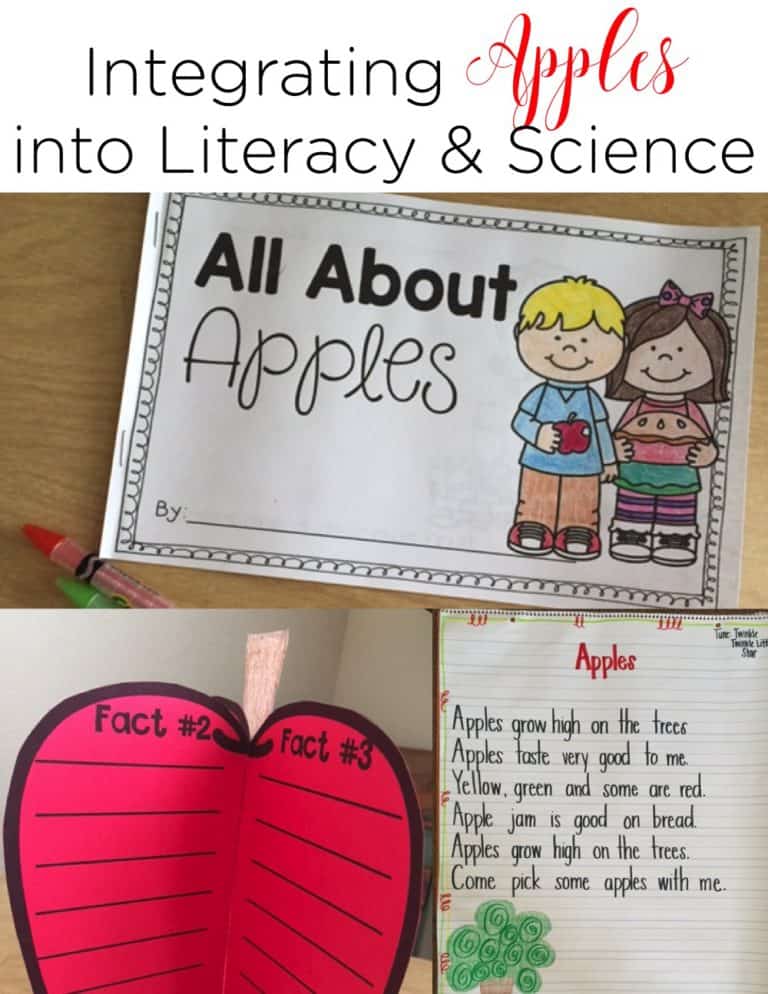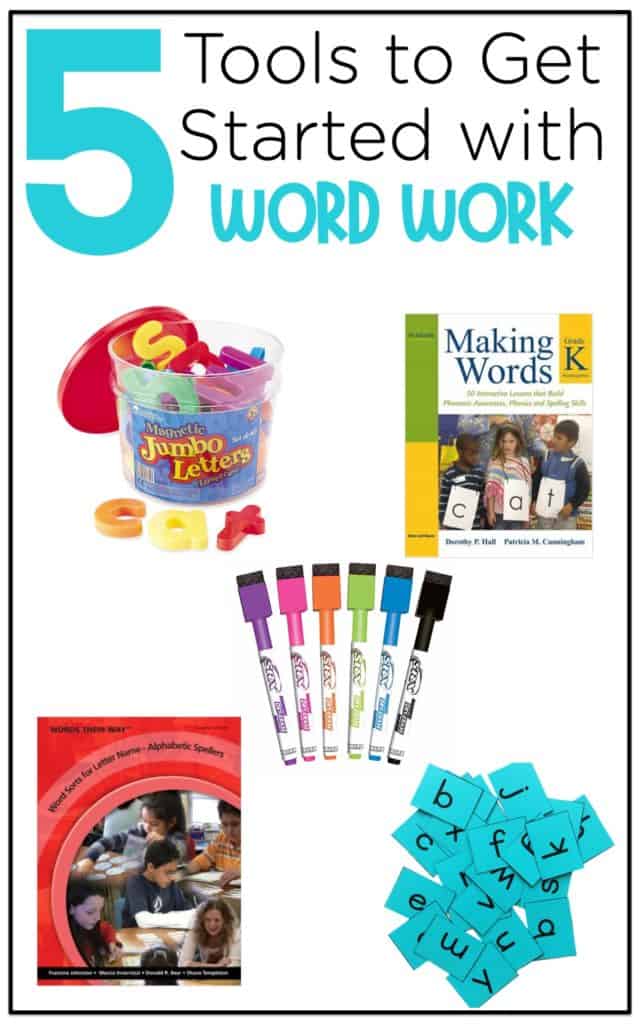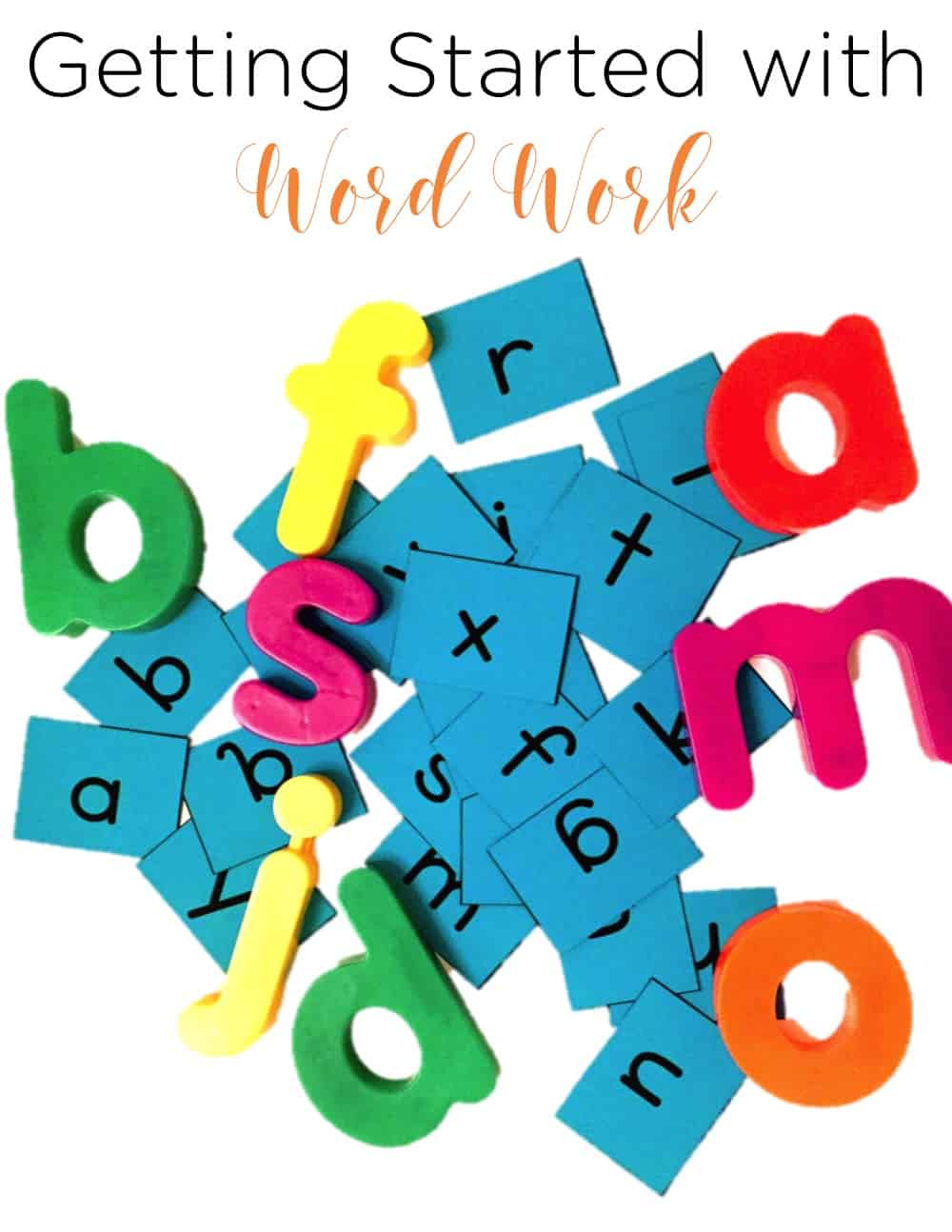

Word work, or word study, is an important part of the balanced literacy approach to teaching reading. This is the time for the teacher to provide explicit, direct, and systematic teaching instruction on the foundation of the English language. This is not a big chunk of our day, but it’s a part of our day that is truly a pillar of reading as students work toward becoming better readers and writers.
Getting started with a word work time in your classroom can be intimidating–when will you carve out time for this? How will you structure that time? What will it look like in your classroom with all of the different ability levels?
I have done this time first thing in the morning and right after shared reading, but before we do reading small groups and literacy stations. It only takes a small amount of time and the gain is worth EVERY minute!
In our classroom, I did most word work lessons whole group. For example, if am ready to introduce the long /a/ sound, I will gather the kids on the carpet near the easel and we will do a short lesson together, 5-8 minutes total. I then might pass out dry erase boards and students will practice with me close by so that I can easily see what everyone is doing. During this time I am teaching the English phonics skill explicitly, directly, and with a systematic approach.
You might be thinking, “But what if all of my students are ready for long vowels?” You’re right. They might not be ready for it, but that doesn’t mean I don’t expose it and introduce them to it.
For my students who aren’t ready for this, or who are ready for more than this, I tackle that during reading small group time. I also might differentiate during our word work literacy station. My high students might work on /ai/ and /ay/, while my lowest students might need more practice with short /a/.
You can create your own lessons, or use the lessons provided, but remember, not all lessons that you purchase have a direct approach to teaching. We can never assume that our students “get it” or “just know” when we haven’t explicitly said, “short /a/ makes the sound /a/”.
 *Amazon affiliate links are used below at no cost to you.
*Amazon affiliate links are used below at no cost to you.
Large Magnetic Letters– I loved that these letters were large and were the perfect size for my teaching easel.
Alphabet Cards to Sort– I would create a different colored set of alphabet cards for each student, which they kept in a ziplock baggie at the desk. They would take them out and sort them into ABC order when we would do a making words lesson (see book below). Grab them FREE HERE.
Words Their Way Books– If you need some help setting up a system and differentiating for your students, these books were favorites of mine! I used them for several years as a guide.
Making Words Books– This was my favorite resource to use with my kindergarten class. We did all of the lessons who group for several months before I allowed the students to do them with their own alphabet cards.
Dry Erase Boards and Markers-These were perfect for more than 1 subject, of course, but we used them during our whole group lessons when I waned the students to show me that they knew how to write with the new phonics skill we just learned.
If you want to be totally set for word work with everything you’ll need, check out the Kindergarten Word Work Bundle with more than 40 activities in the whole bundle.
There is also a Digital Kindergarten Word Work Bundle. You can use them in the classroom or assign them to students to use while distance learning. You can read more about How to Use Boom Cards and Progress Monitoring with Boom Cards. This bundle covers:
The First Grade Word Work Bundle includes more than 60 hands-on activities to use with your students.
These word work activities were designed to be used during reading small groups, but they are also perfect to use during:
Do you have a word work or word study time in your classroom? What does look like for you? What are your favorite tools?
pin it

Want to use the latest research to boost your readers during small groups? This FREE guide is packed with engaging ideas to help them grow!

I’m a K-1 teacher who is passionate about making lessons your students love and that are easy to implement for teachers. Helping teachers like you navigate their way through their literacy block brings me great joy. I am a lifelong learner who loves staying on top of current literacy learning and practices. Here, you’ll find the tools you need to move your K-2 students forward!


| Cookie | Duration | Description |
|---|---|---|
| cookielawinfo-checkbox-analytics | 11 months | This cookie is set by GDPR Cookie Consent plugin. The cookie is used to store the user consent for the cookies in the category "Analytics". |
| cookielawinfo-checkbox-functional | 11 months | The cookie is set by GDPR cookie consent to record the user consent for the cookies in the category "Functional". |
| cookielawinfo-checkbox-necessary | 11 months | This cookie is set by GDPR Cookie Consent plugin. The cookies is used to store the user consent for the cookies in the category "Necessary". |
| cookielawinfo-checkbox-others | 11 months | This cookie is set by GDPR Cookie Consent plugin. The cookie is used to store the user consent for the cookies in the category "Other. |
| cookielawinfo-checkbox-performance | 11 months | This cookie is set by GDPR Cookie Consent plugin. The cookie is used to store the user consent for the cookies in the category "Performance". |
| viewed_cookie_policy | 11 months | The cookie is set by the GDPR Cookie Consent plugin and is used to store whether or not user has consented to the use of cookies. It does not store any personal data. |
9 Responses
Mrs. Richardson class blog is very interesting and fun of ideas that one can incorporate in their class
Thanks and regards Patricia
Thank you for your generosity in sharing many of your resources and detailed advice on literacy. I find your blog extremely helpful and to the point. It’s very easy to incorporate in my lesson planning. I always look forward to reading your blog and receiving your emails.
That makes me so happy to hear, Vivian! Thank you for sharing that!